Important Ports and Marinas in the Turks and Caicos
Turks and Caicos are a cluster of 40 islands and cays in the North Atlantic Ocean out of which only 10 are inhabited. A British overseas territory, the tropical archipelago lies southeast of the Bahamas and north of Hispaniola. Their economy is based on tourism, finance and commercial fishing.
Close to cities like Miami, New York and London, Turks and Caicos are a perfect weekend getaway. It is a popular cruise destination with exciting shore excursions, music and dance festivals, rich culture and cuisine, vibrant nightlife, water parks and so on.
Indigenous tribes lived in the islands for thousands of years before the arrival of the British in the 16th century. After neighbouring Bahamas attained independence in 1973, Turks and Caicos were made an autonomous territory with a separate Governor.
Traditionally, their economy was based on the salt industry and seafood export, however, it stagnated as the population grew. American investments in the 1980s propelled growth as several hotels, resorts and spas came up, gradually transforming the islands into a luxurious paradise.
Though consumer goods and food are generally imported from Britain and the United States, few crops like maize, beans, cassava and citrus fruits are grown for domestic consumption. Significant exports consist of fish, conch, lobster and crabs but the catch has declined in the last few years due to overexploitation. Turks and Caicos depend on the world for manufactured products, tobacco, tea, coffee, beverages and even clothing since the industrial sector is practically non-existent on the island nation.
Another challenge is to protect this natural haven from pollution as more than six million people visit the place annually. Presently, energy needs are met by burning fossil fuels but many environmentalists highlight the need for adopting eco-tourist practices to safeguard the natural beauty and unique ecosystem of the islands that are home to one of the longest coral reefs and the only conch farm in the world.
The islands of Providenciales, Grand Turk and South Caicos are points of entry for visiting cruise ships and yachts. Others like the Middle Caicos and the Cockburn harbour have numerous marinas offering bunkering and maintenance services.
Let us explore the important ports of the Turks and Caicos Islands.
1. Ports and Marinas of Providenciales
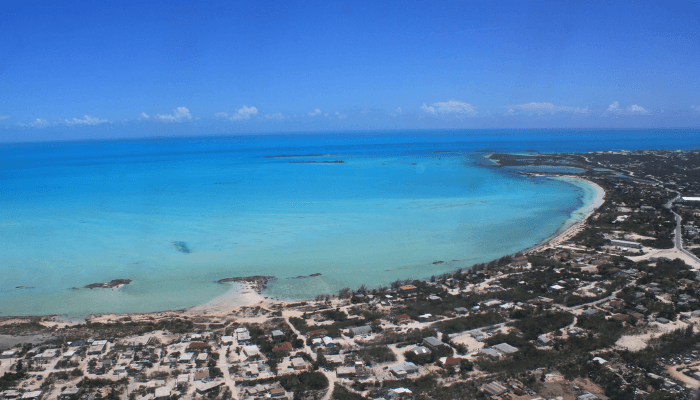
Positioned on the extreme north-western end of the island chain, Providenciales is the fourth biggest island covering 98 square kilometres. It is also the most developed and populated, having many spectacular resorts, beaches and an international airport. It receives imports of gasoline and diesel through shallow draft tankers. From here, fuel is transported to smaller islands in tank containers.
The most popular is the white-sand Grace sea Beach, lined with air-conditioned cabanas. Popular historical sites include the Cheshire Hall, a mediaeval era cotton plantation and an Anglican Church.
An eighty kilometre-long barrier reef runs along the coast, making it an ideal location for diving, snorkelling, kayaking and paddleboarding. Long Bay beach is best for Kiteboarding since it is exposed to eastern trade winds. It also boasts one of the finest golf courses in the Caribbean overlooking ponds, exotic birds and limestone formations.
South Bank Marina, earlier known as the Caicos Marina and Shipyard is a point of entry situated near the Long Bay Beach on the Providenciales. It provides an array of services for yachts and recreational vessels without any size restrictions.
Low sulphur diesel and ethanol-free gasoline are available at the South dock industrial port mainly handling larger cruise vessels weighing up to 75 tonnes. It also has an
outboard repair shop offering engine and hull repair, fibreglass work, painting and cleaning. South Bank marina has the best equipment including a travelift, a 20,000 lb capacity forklift and a large towing tractor.
Blue Haven Marina lies in the Leeward region on the eastern part of the island and consists of floating docks suitable for vessels measuring 220 feet with a draught of 8.5 m. Fuel services, catering, provisioning and laundry services are offered. Princess Alexander Reserve and the Mangrove Cay are popular attractions. The tour operator Big Blue Collective offers boat rentals and organises regular diving excursions.
South Side Marina is a tiny harbour lying on the southern end of Providenciales in the turtle tail region. Boat charter companies like the Caicos Adventures and Aqua operate at the Marina, providing excursions to the French Cay, Sapodilla Bay and the Northwest point.
Positioned on the northern coast of Providenciales is the Turtle Cove Marina equipped with fuel, electricity, wifi and freshwater provisions. The oldest recreational marina of the Turks and Caicos, it has 65 slips and a boat ramp with a trailer for launching vessels.
The Heaving Dock Rock Marina is situated on the eastern coast of the island. Also known as the walking marina, it is a departing port for passenger ferries and accommodates tour vessels and private yachts.
Caribbean Cruisin’ and MV My Girl are the two cruises that leave from the port to other islands such as the South Caicos, Middle Caicos and the Salt Cay. The marina is equipped with free wifi, waiting rooms, lounges, a spa centre and a few duty-free shops.
2. Port of Grand Turk
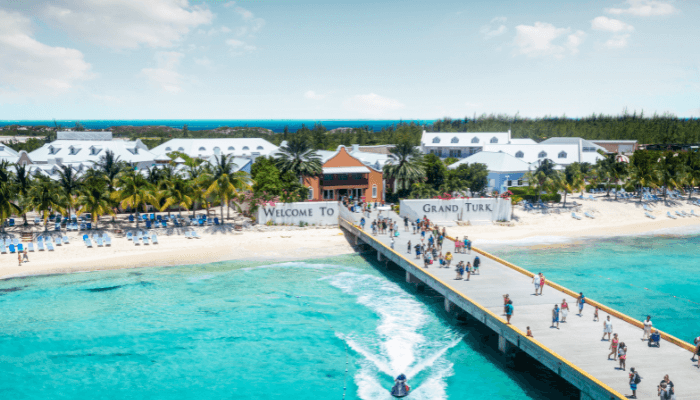
The second most-populated island, Grand Turk is renowned for its world-class Cruise port located on its southern end. It has a floating pier with two berthing facilities for accommodating cruise ships. Made of reinforced concrete and steel piles, the pier is 1050 feet long, and 40 feet wide and is connected to three mooring dolphins.
The Cruise centre covers 18 acres of land and consists of a picturesque waterfront. Guests can swim in one of the biggest swimming pools in the Caribbean or rent a private poolside. Floating gear and snorkelling equipment are available at the rental hut. Herbal spas and massages can be enjoyed at the spa hotel close to the Flowrider surfing attraction. It also has a shopping centre covering 45,000 square feet, selling jewellery, fast fashion, local souvenirs and whatnot.
Close to the cruise port is the Columbus Landfall National Park, a protected area housing many beaches such as the Cockburn beach and the SunRay beach.
The Grand Turk Lighthouse is a famous landmark on the island which was built in the 16th century. The only lighthouse in the island nation, it is currently not operational. History enthusiasts can visit the Turks and Caicos National Museum situated on Front Street. It has fascinating displays such as an 800-year-old hand-carved chair and artefacts from the Molasses shipwreck. Historic buildings reminiscent of the colonial past lie on Duke street in the old town.
3. Cockburn Harbour
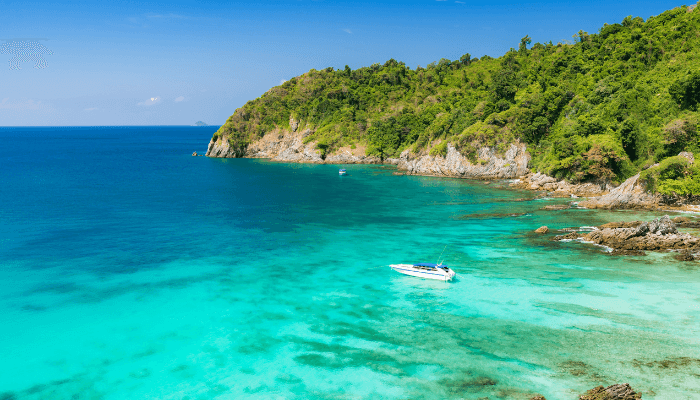
Capital of South Caicos, Cockburn harbour is the principal settlement, also called the fishing hub of the Turks and Caicos as it houses two fish processing plants and seafood exporting companies. Lying on the southwestern coastline, it is home to a large number of the island’s residents. The town was established in the 1850s and named after its earliest governor, Sir Francis Cockburn. It had a prosperous salt exporting industry which collapsed in the 1960s.
Today it is famous for its historic buildings such as the Wesleyan Church and the Residency, an abandoned bungalow of a former British commissioner. In 1966, the Queen of England and Duke of Edinburgh visited the harbour on their Britannia. Since then, the South Caicos Regatta is held every year in May to commemorate their visit.
Two hotels are located on the southern end of the town. Tourists must visit the Dove Cay for gazing at the magnificent sunset view while Admiral Cockburn Land and Sea National park is ideal for nature lovers.
Sea View Marina is a small dock supporting the island’s commercial fishing industry. It also accommodates yachts and small cruise ships occasionally. It can be entered via the Columbus Passage and the Long Cay which offers sufficient water depth. Adjacent to the marina is a supermarket and a general goods shop. Though fuel is available, speciality supplies are sourced from Providenciales as South Caicos does not provide extensive ship repair services.
4. Bellefield Landing
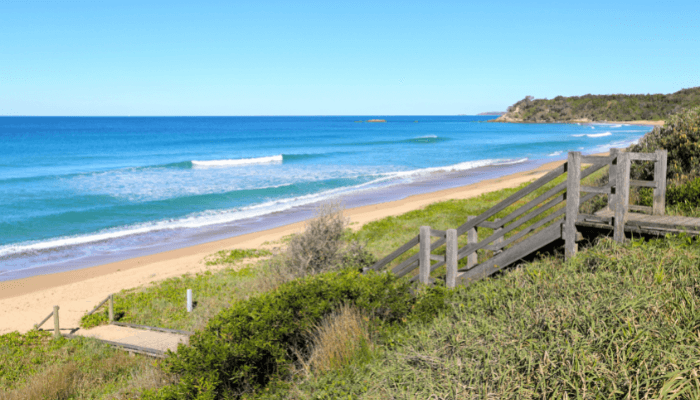
Situated on the western side of the North Caicos, Bellefield Landing is the key industrial port of North and Middle Caicos which are connected by a causeway. Ferries ply from the port to the island of Providenciales and South Caicos.
In 2007, a two-mile-long channel was created between Dellis Cay and Parrot Cay till the port harbour for receiving larger vessels. However, silting has made navigation difficult and there are plans to re-dredge the channel. Earlier the Sandy Point Marina handled all the ferries however today Bellefield Landing is the island’s main ferry port. It also deals with a large quantity of broken industrial and other machinery which is exported from the island through ferries.
It is located near the settlement of Kew and the famous cotton and sisal plantations of the mediaeval era such as the Wade Green, which are popular tourist attractions. In the 18th century, North Caicos had considerable agricultural land and till today, traditional farming methods are used for growing tomatoes, peppers, melons, sugarcane and papaya.
The Dick hill creek and the Pond Nature Reserve lie on the northern side of the port. It contains mainly tidal channels and marine mangroves covering over 300 hectares. A protected area, it shelters the wading birds and endangered species like the whistling ducks and turtles.
5. Deane Dock
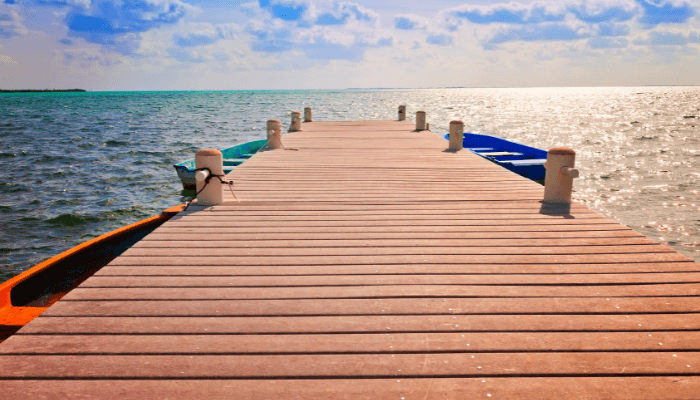
Salt Cay is a tiny island lying southeast of the Turks island group covering 6.7 kilometres. Ships can anchor near the west coast of Salt Cay as it is well-sheltered from the trade winds. Most of the Cay contains marine ponds and tropical brushlands. It is one of the least visited islands of the archipelago with limited tourism but is famous for scuba diving and snorkelling.
The settlement of Balfour town is situated on the northwestern coast of Salt Cay. Much of the island’s communications infrastructure and businesses including an airport and Deane’s dock are located in this quiet town offering a taste of the old ways of life.
Deane’s dock is the only cargo and passenger port for the Salt Cay lying in the centre of the town. The dock is said to be named after a salt producer called James Deane.
Usually, the harbour is not visited by many vessels, only ferries from the Grand Turk port are moored here. Lying on the sheltered western part of the Cay, it is made up of a concrete pier and a breakwater that offers protection from large ocean swells.
The Salt Cay Community Ferry and the Salt Cay divers club are based at the Marina famous for local cafes like the coral bar and the brill, offering a seaside barbeque experience.
The port was constructed in 1896 and was refurbished with a main breakwater and two piers in the 1990s. Hurricane Ike caused heavy damage to the port in 2008, after which it had to be rebuilt. Reconstruction works were undertaken in 2017 after the Maria hurricane hit the Turks and Caicos Islands.
Disclaimer: The authors’ views expressed in this article do not necessarily reflect the views of Marine Insight. Data and charts, if used, in the article have been sourced from available information and have not been authenticated by any statutory authority. The author and Marine Insight do not claim it to be accurate nor accept any responsibility for the same. The views constitute only the opinions and do not constitute any guidelines or recommendations on any course of action to be followed by the reader.
The article or images cannot be reproduced, copied, shared, or used in any form without the permission of the author and Marine Insight.
Do you have info to share with us ? Suggest a correction

About Author
Zahra is an alumna of Miranda House, University of Delhi. She is an avid writer, possessing immaculate research and editing skills. Author of several academic papers, she has also worked as a freelance writer, producing many technical, creative and marketing pieces. A true aesthete at heart, she loves books a little more than anything else.
Latest Maritime Knowledge Articles You Would Like:
Subscribe To Our Newsletters
By subscribing, you agree to our Privacy Policy and may receive occasional deal communications; you can unsubscribe anytime.















